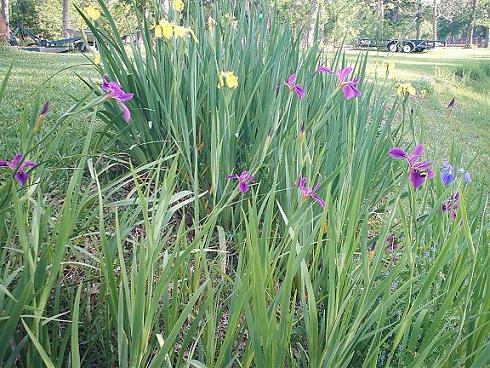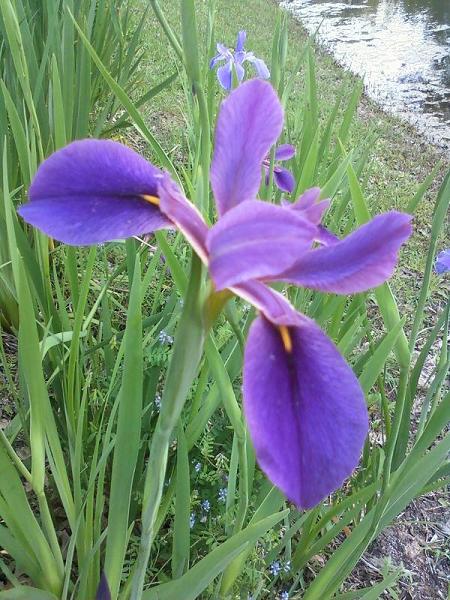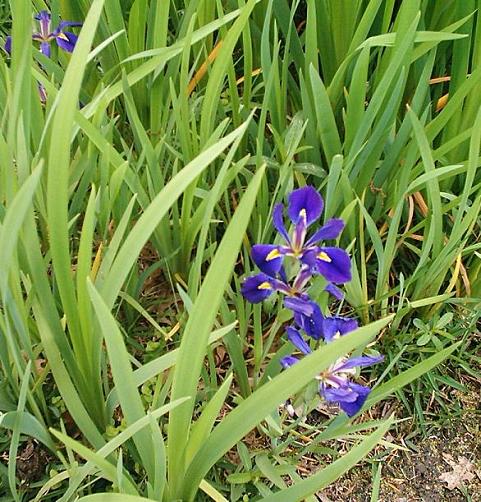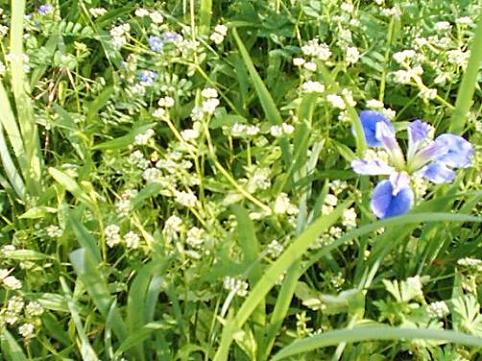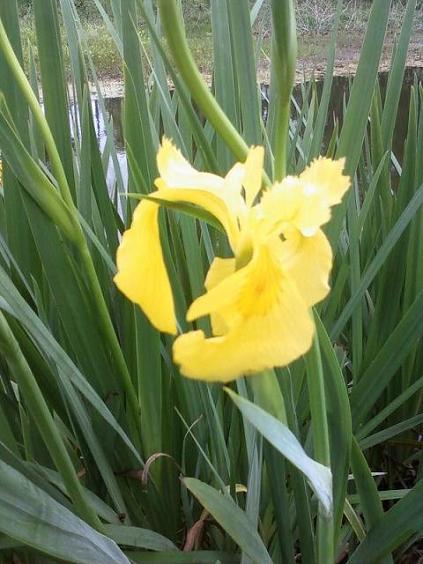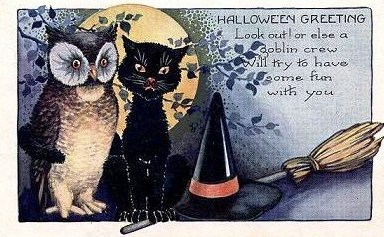Maypops (Passiflora incarnata)
on Wednesday, July, 02 2014 07:45:46 pm , 609 words
Categories: Uncategorized , 196224 views
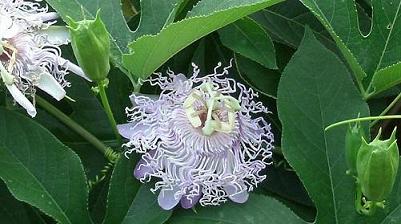
One of the most beautiful, intricate, and complex flowers seen this time of year throughout the southern area of the United States is that of the Maypop (or Purple Passionflower) plant, Passiflora incarnata, one of the more than 500 species of the genus Passiflora. The Maypop is a fast-growing perennial herbaceous climbing vine with clinging tendrils, large, trilobed (trident-shaped) leaves, and spectacularly-colored blooms, some of which give rise to an edible, egg-shaped, berry-like fruit, which contains an abundance of gelatinously covered seeds.
One of nine species of Passiflora native to the continental United States, the Maypop ranges from Texas in the south and west, northward to Kansas, thence east to Pennsylvania, south to Florida, and west to Texas, inclusive of all states within that perimeter. The Maypop is a subtropical representative of its particular plant family and thus can withstand cold temperatures down to -20°C (-4°F) before the roots die.
The most notable feature of these hardy perennial plants is their amazingly complex and beautiful flowers, called "passion flowers" by 16th-century Spanish missionaries, thus the name, Passifloraceae, for the family, and Passiflora, for the genus. The different components of the fascinating flowers were seen by the missionaries as symbolic of the crucifixion of Jesus: the ten sepals and petals represented ten apostles (excluding Judas and Peter, one who betrayed and one who denied), the colorful filaments were the crown of thorns, the three stigmas represented the three nails which fastened the Christ to the cross, and the five anthers were the five wounds he received during the crucifixion.
The five sepals and five petals open wide and flat underneath rings of variegated filaments that surround a central stalk which bears the ovary and stamens. The five sepals are green on the underside of the bloom but white on their top sides, thus giving the appearance of additional petals. The actual petals range from a light blue to white.
The flowers are rather too large and complex for pollination by honey bees, but larger bees such as carpenter bees and bumble bees have an easier time of it and are particularly attracted to the spectacular blooms of the Maypop.
Why are they called "Maypop"? Some online sources say the name combines the month the flowers first bloom (though here in central-coastal Texas, they are mostly first seen in June) and the sound one hears when one steps on the rind-enclosed fruits, which are actually a berry, being composed of numerous seeds (white while the rind is still green; black once the rind turns a yellowish-brown and begins to shrivel before ultimately drying out completely, whereupon it releases the seeds).
The fruit (including the rind and seeds) is edible and the pulp-covered seeds make a tasty juicy snack on hot summer days. The green rinds, when used for food are best cooked, since too many eaten raw can burn the mouth. (Young seeds of the immature fruits can be eaten. When the fruits ripen, the seeds, of course, get tougher, so be careful how you dispose of them or you'll have a yard filled with Maypop plants. By the way, if you have Maypop planted along a fence, you can control their spread by mowing them where you do not want them growing, or by simply pulling and snapping off the unwanted plants.) The fruits can be made into jelly, though I have not tried making any. The vines attract and feed a variety of insects, particularly the Gulf Fritillary (Agraulis vanillae), the Zebra Longwing (Heliconius charithonia), the Variegated Fritillary (Euptoieta claudia), and the Julia Butterfly (Dryas iulia).
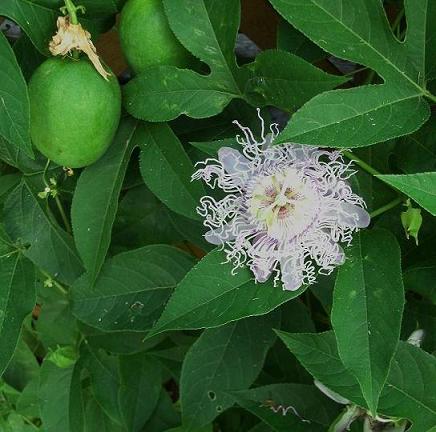

USDA map showing the native range of Maypops (Passiflora incarnata)


